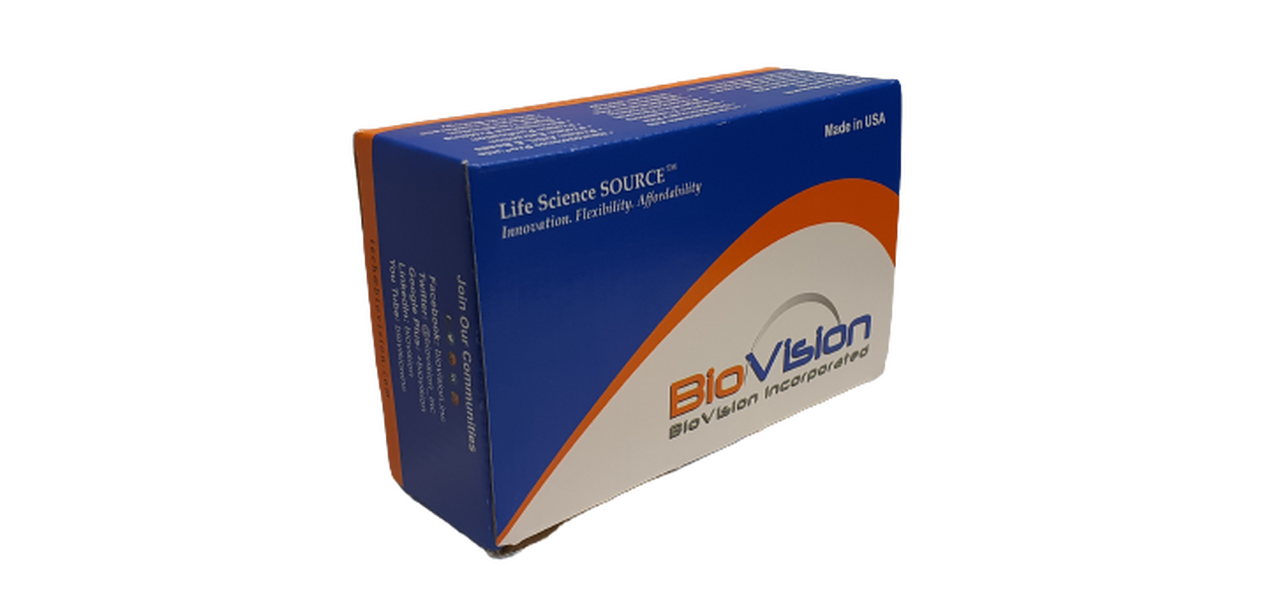Product Description
Biovision | K2088 | TFEB Transcription Factor Activity Assay Kit (Colorimetric) DataSheet
The transcription factor EB (TFEB) gene encodes a transcription factor, which is a master regulator of lysosomal biogenesis and exocytosis in autophagy. In normal state, TFEB gets phosphorylated via mTOR and MAPK pathways and is present in the cytoplasm. However, upon starvation or lysosomal stress, TFEB gets dephosphorylated and is translocated to the nucleus where it binds to the CLEAR consensus DNA sequence (5’-GTCACGTGAC-3’) in the regulatory region of the lysosomal genes and induces the transcription of the downstream genes. Traditionally, western blot is used to detect the expression of TFEB and electrophoretic mobility shift assay (EMSA) or reporter assays are used to measure the TFEB activity respectively. But some of these methods are time consuming, laborious, and uses radioactivity. BioVision’s TFEB Transcription Factor Activity Assay is a 96-well plate based colorimetric assay to measure the activation of TFEB in nuclear extracts or cell lysates. The kit offers a easy, rapid, sensitive and non-radioactive way to detect the activation of human TFEB in samples. In this assay, double stranded oligonucleotides are coated on the 96-well plate. The cell lysate or the nuclear extract containing the active TFEB is then added to the wells, which binds to the oligonucleotides on the plate. After the addition of TFEB primary antibody that recognizes the TFEB-oligonucleotide complex, a HRP-conjugated secondary antibody is added followed by the addition of TMB substrate and a color signal is developed, which is measured at 450 nm.
Alternate Name : cAMP Assay Kit Cyclic Adenosine Monophosphate Assay Kit
Tag Line : A 96-well plate based colorimetric assay to measure the activation of TFEB in nuclear extracts or cell lysates
Summary : BioVision’s TFEB Transcription Factor Activity Assay is a 96-well plate based colorimetric assay to measure the activation of TFEB in nuclear extracts or cell lysates.
Detection Method : Absorbance at 450 nm
Sample Type : Adherent or suspension cells i.e. HeLa, Jurkat cells. Animal Tissues i.e. liver, kidney, lung etc.
Species Reactivity : Mammalian
Applications : To study the regulation of AMPK by cAMP To study key cellular processes such as Ca2+ signaling, glucose uptake, lipid uptakes and oxidation To measure cAMP levels in various cell and tissue lysates
Features and Benefits : The assay is simple, easy to use, quick, sensitive, and is high-through adaptable. It can measure lower than 0.2 µM cAMP levels in various samples.
 Euro
Euro
 USD
USD
 British Pound
British Pound
 NULL
NULL








